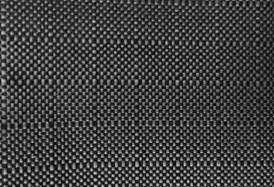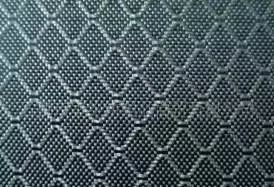Oxford cloth is also called Oxford spinning. It is made of polyester, polyester and cotton blended yarn interwoven with cotton yarn, and adopts square weave with flat weft weight. It is easy to wash and dry, soft to handle, good in moisture absorption and comfortable to wear. It looks like colored woven fabric. It was named because the uniform shirt of early Oxford University was made of this kind of cotton. In the 1900s, a small group of maverick students in Oxford University designed and processed combed cotton fabric by themselves to fight against the extravagant fashion of clothing at that time. This fabric has a two-color effect, and its color is harmonious, quiet, breathable, comfortable and natural. As a result, this fabric has become the exclusive use of Oxford University uniforms, and has become popular in Europe and the United States for a hundred years, known as Oxford Textile.
Main varieties of oxford cloth
The plaid oxford cloth is specially used for making various bags

1.jpeg
Nylon oxford cloth, mainly used for flood and rain prevention

2.jpeg
How to name oxford cloth specifications?
For example, 210D oxford cloth should be made of 200D raw materials for warp and weft. Why not call it 200D oxford cloth? At present, the allowable error range of raw material thickness in the world is+/- 5%, which is generally called 210D. 1680D luggage cloth should be woven from 2 pieces of 800D, otherwise it cannot be called 1680D luggage cloth. In addition, the density of longitude and latitude is also very important. It is also 210D. Some cloth is dense and some cloth is thin. This is because the density of longitude and latitude is different. When you buy Oxford cloth, you must pay attention to the density of longitude and latitude. The warp direction generally refers to the number of reeds, the number of reeds 12 is 12 per cm, the number of reeds 2 is 24 per cm (12 * 2), and the weft direction generally refers to the number of shuttles, that is, the number of yarns per cm, which can be measured with a weft density mirror. For example: 1200D12 # reed 7.5 shuttle, namely 12 1200D in warp direction and 7.5 1200D in weft direction. Foreign countries often talk about the number of T, such as 86T, 190T, 210T, etc. This refers to the sum of the number of yarns in the warp direction and the number of yarns in the weft direction within the range of 1 inch long and 1 inch wide.
Common quality problems in oxford fabric finishing
Formaldehyde exceeds the standard
Oxford cloth often needs to be stiffened. Now the commonly used stiffening agent on the market is amino resin, which is polymerized with formaldehyde as the main raw material. The fabric surface processed with this kind of resin contains high free formaldehyde, which is very easy to exceed the standard. The solution is to choose acrylic resin or vinyl acetate resin.
Metal ions exceed the standard
The metal ions Cu, Cr, Co, Ni, Zn, Hg, As, Pb, Cd, etc. have been detected in the export products. If they exceed the standard, they will also have serious consequences like formaldehyde. Among the auxiliaries, there are few such metal ions, but some additives will cause the standard exceeding. For example, the flame retardant antimony trioxide emulsion contains mercury. When the medium dye is used in wool spinning, the medium dye is potassium dichromate or sodium dichromate or sodium chromate, and the 6-valent Cr will exceed the standard.
Color change problem
After finishing, there are many problems of color change, so attention must be paid to the selection of dyes during dyeing. During dyeing and proofing, the corresponding finishing must be carried out according to the process to judge whether the selected dyes will undergo color change under the action of auxiliaries in the finishing. At the same time, factors such as light color and color change caused by dye sublimation during drying and baking and yellowing caused by excessive temperature should also be considered.
APEO exceeds the standard
APEO, as an indicator, is also strictly restricted. This indicator is related to the scouring agent and penetrant in the pretreatment, the detergent and leveling agent in the printing and dyeing, and the emulsifier in the softener in the finishing. At present, TX and NP series surfactants are widely used as the raw materials of the auxiliaries, so its prevention is difficult. The only way is for the printing and dyeing plants to adhere to the use of environmental protection auxiliaries, It is strictly prohibited to use additives containing APEO and toxic and harmful substances in the factory.
Contact: Jeanne yang(MISS)
Phone: 13912652341
E-mail: [email protected]
Add: Room A2216/A2217,Double-Star Building,No 567 New South Middle Road, KunShan City JiangSu Province ,China.